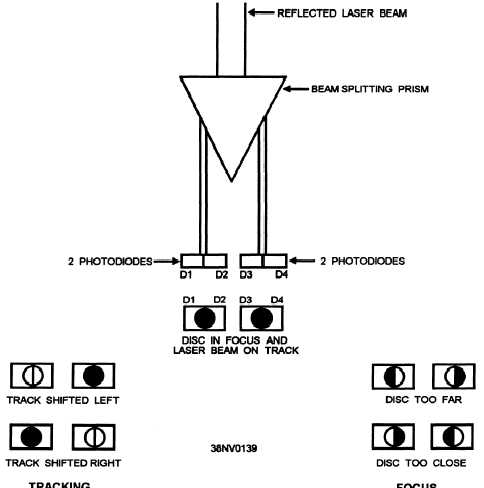The laser beam is directed to the disc using several
different methods, depending on the system preferred
by the manufacturer. One type of system deflects the
laser beam off a semitransparent mirror, through the
lenses, and onto the disc. When the laser beam strikes
a land, the reflected light passes through the
semitransparent mirror into the photodetector.
Lenses
The lenses in a CD-ROM drive are used to focus
the laser beam onto the compact disc. When the laser
is turned on, the beam tends to diverge as it travels away
from the source. The beam first passes through a
collimating lens that reduces the divergence. The
beam then passes through the objective lens, where it
is focused onto the surface of the disc.
The final component used to focus the beam on a
compact disc is the disc itself. The diameter of the laser
beam as it exits the objective lens is approximately
1 mm. The refractive properties of the clear plastic
material of the disc further focus and reduce the
diameter of the laser beam so that it is 1.0 µm when it
reaches the information surface of the disc. This fine
focus of the laser is one of the factors of the high
durability and reliability of the compact disc.
Tracking and Focusing
Once the optical head is positioned over the area to
be read, a system is needed to properly hold the optical
head on the track and maintain proper focus. Errors in
tracking and focus can occur because the compact disc
is not perfectly flat. Several methods are used to
determine tracking and focus.
In the optical head system described earlier in this
chapter, the reflected laser beam passes through the
semitransparent mirror. The reflected laser beam is
next split into two beams by a prism. These two beams
are directed to the photodetector. The photodetector
consists of four photodiodes. Figure 11-4 shows how
the reflected light strikes the photodiodes if the tracking
Figure 11-4.—Photodiodes detecting tracking and focus of the laser beam.
11-5

